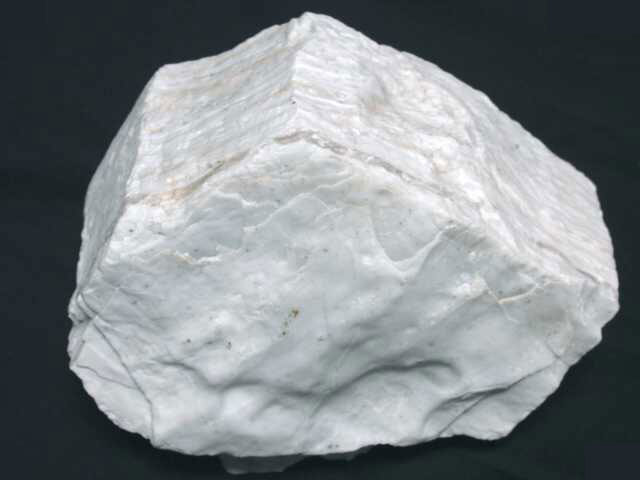Talc is the world's softest mineral. Although all talc ores are soft, platy, water repellent and chemically inert, no two talcs are quite the same. Talc is a vital part of everyday life. The magazines we read, the polymers in our cars and houses, the paints we use and the tiles we walk on are just some of the products that talc enhances.
Talc is a hydrated magnesium sheet silicate with the chemical formula Mg3Si4O10(OH)2.
Talc is practically insoluble in water and in weak acids and alkalis. It is neither explosive nor flammable. Although it has very little chemical reactivity, talc does have a marked affinity for certain organic chemicals, i.e. it is organophilic. Above 900°C, talc progressively loses its hydroxyl groups and above 1050°C, it re-crystallizes into different forms of enstatite (anhydrous magnesium silicate). Talc's melting point is at 1500°C.
Pulverized soapstone powder has wide industrial applications as filler in rubber, textile, plastic, linoleum, asbestos products, polishes and soaps; as a loading agent for paper of all kinds; as a carrier of insecticidal and pesticidal dusts and for coating calcium ammonium fertiliser. Most of the rubber manufacturers use soapstone powder as a lubricant to prevent ungalvanized rubber goods from sticking. The purer variety of steatite after calcination, industrially called 'Lava' is used in the manufacture of low loss ceramic materials required for high frequency insulations in all kinds of radio, television and related instruments. Bricks made out of crushed steatite bonded by sodium silicate are used for the manufacture of furnaces in which argentiferous lead is softened before desilverising. Paper industry accounts for about 50% of the total consumption, in the domestic industry, 15% is shared by the insecticide and pesticide industries and only 3% by talcum powder manufacturers. The remaining quantity is consumed in textile, ceramics, paints, rubber, foundry facing and other industries.
| S.NO. | PARAMETER | PERCENTAGE |
|---|---|---|
| 1. | Loss on Ignition | 4% to 6% |
| 2. | Loss on Drying | 0.05% |
| 3. | Acid soluble substances (as SO4) | 2% to 3% |
| 4. | Extractable Fluoride | 0.2% to 20% |
| 5. | pH (at 10%) | 8.5% to 9.5% |
| 6. | Soluble Salts | 0.2% |
| 7. | Absorption in Oil | 30 to 35 |
| 8. | Asbestos Fibers | Nil |
| 9. | Arsenic | Nil |
| 10. | SiO2 | 60 to 67 |
| 11. | MgO | 29 to 32 |
| 12. | Fe2O3 | 0.15 |
| 13. | CaO | As per requirement |
| 14. | Al2O3 | 0.6% to 1% |
